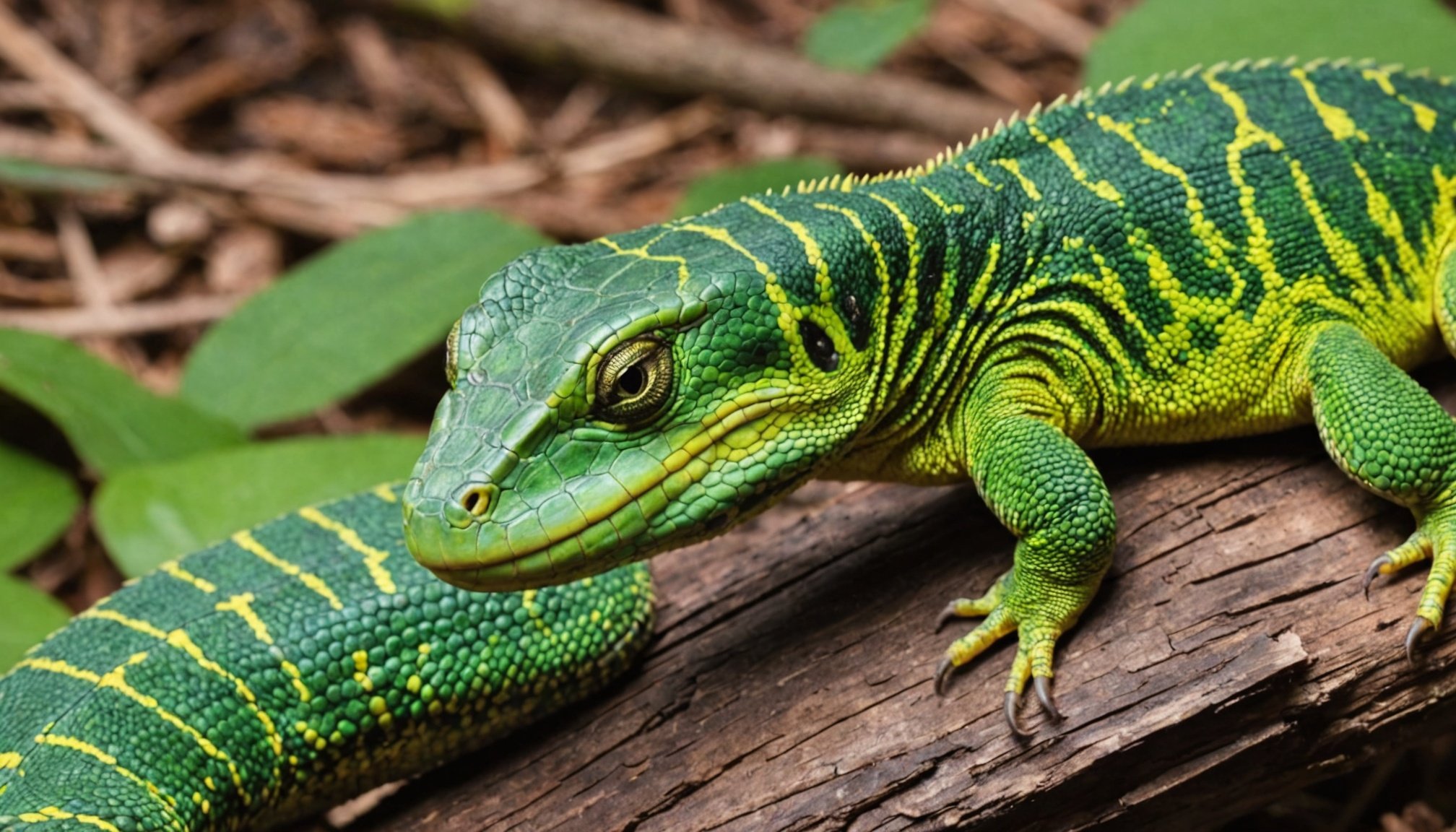Understanding Stress in British Reptiles
Recognizing stress indicators in reptiles is crucial for maintaining their health and well-being. When discussing reptile care, it’s important to remember that these creatures are highly sensitive to their environments and can easily become stressed. Common stressors include improper habitat conditions, lack of privacy, and insufficient dietary care. Being aware of behavioral signs can help owners intervene early, potentially preventing more serious health issues.
Overview of Reptiles as Pets
Reptiles are increasingly popular as pets due to their unique behaviours and diverse forms. However, unlike traditional pets, reptiles have specific needs that, if unmet, can lead to stress. Basic reptile care involves understanding their natural habitat, diet, and social needs. Stress not only affects their behaviour but can also compromise their immune system, making them more susceptible to diseases.
Also to read : Creating an ideal vegetarian diet for your cherished guinea pig: a comprehensive guide
Importance of Recognizing Stress in Reptiles
It’s essential for pet owners to identify and address stress in their reptiles promptly. Stress indicators in reptiles include both physical signs (such as changes in colour or appetite) and behavioral signs (like hiding or aggression). Monitoring these can help assess the reptile’s well-being.
General Signs of Stress Across Various British Reptile Species
While species-specific signs vary, some are common across multiple British reptiles. These signs include changes in eating patterns, lethargy, and excessive hiding. Recognizing these broad indicators is the first step towards improving their environment and ensuring their contentment.
Have you seen this : Exploring the special health challenges of scottish fold cats and their unique ear structure
Key Indicators of Stress in Different British Reptile Species
Understanding stress indicators in reptiles requires a close look at each species. With lizards, common species-specific signs of stress include noticeable color changes and lethargy. On the behavioral side, prolonged hiding or sudden aggression are red flags. Recognizing these signals appropriately is crucial in effective reptile care to tailor interventions based on each species’ unique behaviors.
In the realm of snakes, stress often manifests as physical issues like shedding problems or loss of appetite. Behaviors such as excessive movement or unprovoked striking can indicate stress. It’s vital to understand the habitat needs of British reptiles like snakes, ensuring environments are conducive to reducing stress and promoting well-being.
Tortoises, another popular British reptile, display stress indicators through shell abnormalities and unexpected weight loss. Behaviorally, a stressed tortoise might withdraw into its shell more than usual or exhibit unusual inactivity. Identifying and rectifying environmental triggers, such as incorrect temperature or humidity levels, can significantly alleviate stress.
Even within the broad context of reptile care, these species-specific signs hold insights essential for maintaining healthy, stress-free pets. Recognizing these identifiers empowers owners to support their reptile’s well-being effectively.
Proven Relief Techniques for Stressed Reptiles
Understanding stress relief for reptiles is crucial for improving their well-being. Creating a suitable habitat is a fundamental step in reptile care. A well-designed environment can significantly reduce stress, providing essential comfort and security.
Importance of Environment Setup
Proper habitat modifications play a vital role. Ensuring your reptile’s living space mimics their natural surroundings can help alleviate stress. For example, maintaining adequate temperature and humidity levels is crucial. Different British reptiles require specific ranges, so understanding your pet’s unique needs is essential.
Security Through Hides and Shelters
Incorporating hides and shelters offers a sense of security. Reptiles, being naturally shy creatures, benefit from environments that allow them privacy and safety from potential stressors. These structures not only provide physical security but also cater to the behavioral signs of stress that may include increased hiding or withdrawal.
Recommended Conditions
Adhering to recommended temperature gradients is key. This ensures reptiles can thermoregulate efficiently. Humidity levels should reflect those of their native habitats, often differing between species-specific signs of stress. Such attentive care empowers owners to address and prevent further stress episodes effectively. By focusing on these comfort techniques, the well-being of your reptilian friend can be greatly enhanced.
Expert Recommendations and Research Insights
In reptile care, consulting expert resources and considering veterinary advice are fundamental for ensuring the well-being of your pet. Research studies provide valuable insights into understanding reptile stress and its management. By exploring the latest studies, reptile owners can better interpret stress indicators in reptiles and adopt effective relief strategies.
Veterinarians emphasize the need for regular check-ups. These visits assess physical health and monitor any behavioral signs of stress, offering timely intervention. Medical professionals can identify subtle species-specific signs that might be overlooked by less experienced handlers, ensuring that reptiles receive appropriate care.
Additionally, leveraging education materials can significantly enhance the effectiveness of reptile care. Resources such as books and online forums provide a wealth of information, supporting continuous learning. Regular engagement with the reptile community helps pet owners stay informed about new trends and techniques in veterinary advice.
It’s invaluable for owners to involve themselves in seminars and workshops led by reptile experts. These events often present data-driven research studies that illuminate the profound effects of environment and diet on reptilian stress. By prioritizing informed care practices, owners can confidently build a nurturing habitat that closely aligns with their pet’s needs.
Conclusion and Further Resources
In the realm of reptile care, continuous learning is essential for pet owners to ensure their reptiles live healthy, stress-free lives. Understanding stress indicators in reptiles, such as behavioural changes or physical signs, is just the beginning. Regularly updating your knowledge can provide deeper insights into the needs of these fascinating creatures.
Utilising a range of reptile care resources can support this journey. Many educational materials are available, offering valuable information on how to effectively care for British reptiles. Books written by reptile experts delve into species-specific needs, while online forums enable interaction with other enthusiasts and professionals. These platforms are excellent for sharing experiences and staying informed about the latest research studies and advancements in veterinary advice.
For those seeking to expand their understanding, seminars led by experts present opportunities to explore new techniques and strategies for managing reptile stress. Such events often highlight key findings from the latest studies, offering practical solutions to common care challenges. By actively engaging with such resources, reptile owners can thrive as informed caregivers, fostering environments where their pets can flourish. This commitment to learning ultimately contributes to the overall well-being and happiness of both the reptiles and their owners.











